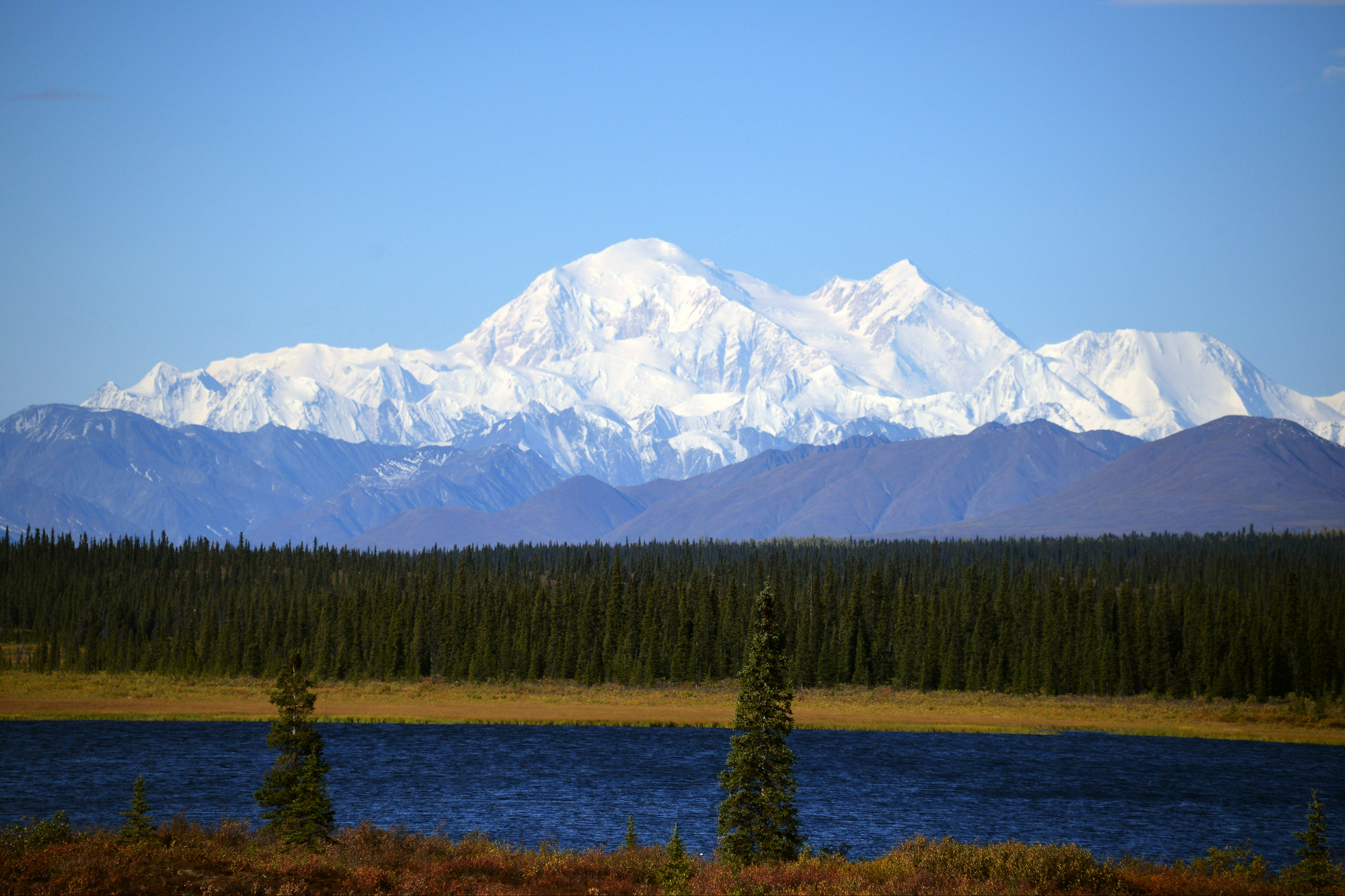One hundred years ago, President Woodrow Wilson signed into law the National Park Service Organic Act, creating the National Park Service. On Aug. 25, the Park Service will celebrate the centennial of America’s parks system. Leading up to the celebration, Here & Now’s Jeremy Hobson is talking to park rangers and officials across the country.
Today, he gets a snapshot of Denali National Park and Preserve in Alaska from Dave Schirokauer, the park’s resources and science team leader. Denali’s 6 million acres of alpine tundra and taiga forest are home to the tallest peak in North America, for which the park is named, as well as the National Parks Service’s only dog-sled team.
Interview Highlights: Dave Schirokauer
For people who have never been to Alaska, let alone Denali, describe Alaska for us.
Well let me start with what it’s like here in the summertime. Right now we’re experiencing 24 hours of daylight. So it’s a really fun time of year, it doesn’t get dark. While it’s difficult to sleep, there’s lots of opportunities to do things around the clock. The animals are abundant and are readily observable feeding–we’ve got bears, sheep, lots of activity during the summer time.
Array
On how the national park was started:
This part of the Alaska landscape originally caught the attention of a scientist back at the turn of the last century in the early 1900s, and that was Charles Sheldon. He was really intrigued with the abundance of the wildlife here, and in particular the doll sheep. Those are the white sheep with curly horns that are a close cousin to the big-horn sheep that occur in the West.
He also became concerned that market hunters were starting to harvest these animals to feed the growing communities in Alaska. He went back to Washington D.C. and lobbied for about 10 years, and convinced Congress to set aside this park as a game reserve basically in 1917. At that point, it was only 2 million acres though. And in 1980, with the passage of the Alaska National Lands Conservation Act, or ANLCA, Denali was expanded to 6 million acres.
How many visitors do you get these days?
We get about 550,000 visits a year. Many of those folks come here on cruise ships to the state and then come to Denali to see the interior and view of the wildlife along the Denali Park Road. We also have many independent travelers, and then we have a handful of folks about 1,000 to 12, 13 hundred coming here to climb Denali.
Is it difficult to accommodate all those visitors?
We’re pretty close to capacity at Denali, and we have a pretty sophisticated system to manage the capacity, and what I mean by capacity is that most people that come here to experience the park from a bus along the Denali Park Road. Private vehicles, for the most part, are not authorized to drive on the park road. Way back in 1972, park managers realized that there was probably going to be a crowding problem if everyone could drive their vehicle on the road, and so the road was closed and a shuttle bus system was instituted in ’72.
Today we have a pretty elaborate system where we’re trying to figure out how to maximize the number of buses we can put along the park road while preserving the purpose of the park, which is opportunities for folks to view wildlife and for those animal populations to persist in perpetuity.
On the park during the winter:
Skiing and dog sledding. And that’s one of the really interesting things about the park and one of my favorites aspects is that in the winter, the road closes, but the park doesn’t. And people can experience the park by dog team or on skis or ski trips supported by dog teams.
How was the land formed?
Denali has a very complex geology. There’s a lot of tectonic forces that converge, so these are like continental plates that are floating on the molten core of the earth and there was a lot of movement and plates crashing together in this area. And that’s why we have the highest mountain in North America, and the uplift of the mountain is relatively young. We also have a variety of older sedimentary layers that date back to the age of the dinosaurs. We have dinosaur fossils, and we have even older geology than that. It’s a dynamic landscape, that’s still forming, so the peak of Denali we believe is growing taller is every day. And also there’s parts of the park where landslides are common. So we’re losing parts of the park due to natural forces.
What makes Denali special?
I have a pretty long relationship with Denali. I started here when I was quite young as an intern and it was really the wilderness and the wildlife that impressed me. And I really imprinted on this place because of that, the off trail hiking, the steep topography. The fact that there are things out here that can eat you. It provides for a heightened sense of awareness. A higher level of adrenaline when you’re hiking around in the park, just the magic of not really knowing what creature you might see around the next bend.
And then it’s the fact that all of the components of the ecosystem that were here historically are still here, and there are very, very few protected areas in the world, that statement can hone true. We have wolves, bears. We have all of the prey species still interacting in a relatively primeval way. And so that rare, intact ecosystem is what attracts and bonds me to Denali National Park.
Guest
Dave Schirokauer, resources and science team leader at Denali National Park and Preserve. The park tweets @DenaliNPS.
9(MDE1MTIxMDg0MDE0MDQ3NTY3MzkzMzY1NA001))
300x250 Ad
300x250 Ad
